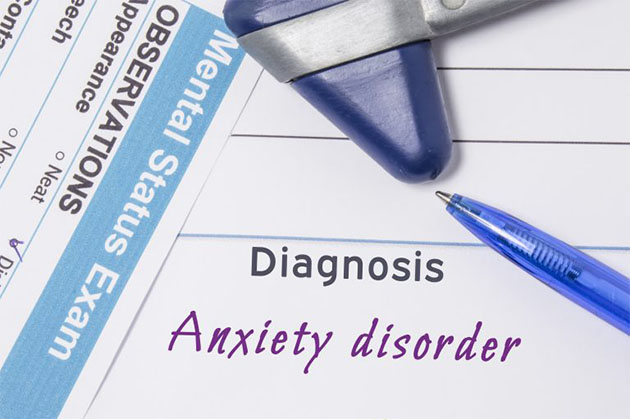Researchers have studied detailed effects of ‘pessimistic thinking’ which occurs in kebimbangan dan kemurungan
Lebih daripada 300 juta dan 260 juta orang di seluruh dunia menderita kemurungan and kebimbangan respectively. Many times, a person suffers from both these conditions. Psychiatric problems like depression and kebimbangan are devastating for patients and their families and they are extremely difficult to treat. Patients suffering from these neuropsychiatric disorders tend to experience a range of negative emotions and moods which makes them more pessimistic thereby making them focus more on the downside of any given situation. A specific personalised treatment can generally help patients alleviate some of the symptoms of these disorders. A type of psychotherapy – cognitive-behaviour therapy – is useful in curbing negative thoughts and emotions. Interpersonal therapy is also routinely used for better outcome for patients. Medications are also advised along with psychotherapy and sometimes interpersonal therapy.
Understanding the effects of depression and kebimbangan gangguan
Dalam satu kajian yang diterbitkan dalam Sel-sel otak scientists have studied how emotions are controlled by our brain. The main goal of researchers was to investigate if they could reproduce the effect on brain which happens to people suffering with depression, kebimbangan or other similar disorders. These patients have a highly negative thinking and they tend to place more weight on negative aspects and outcomes of any particular situation.
The group of researchers from MIT pinpointed a region in the brain which is linked to emotional decision making and is responsible for generating pessimistic moods. This region is called ‘caudate nucleus’ and when it is stimulated it leads to generation of negative moods and /or decisions. This study has been conducted in animals for now. The animal was seen to focus more on the negative drawbacks of situations and not on the benefits whenever this region was stimulated in their brain. This pessimistic decision-making continued for at least 24 hours after the first stimulation was performed. The same group of researchers had previously identified a neural circuit which is crucial for a type of decision making which is called as ‘approach-avoidance conflict’. Making such choices requires a person to weigh the positive as well as negative aspects of a situation and this involves high levels of kebimbangan and sometimes stress. This stress obviously then affects the decision-making process. Therefore, animals got influenced and they then chose a high-risk option under stress anticipating better payoffs.
Untuk membuat pengesahan, penyelidik menawarkan haiwan ganjaran (jus) bersama dengan rangsangan yang tidak mesra (kepulan udara besar ke muka mereka) dan kemudian merangsang nukleus caudate mereka dengan arus elektrik kecil. Dalam setiap percubaan, bahagian yang berbeza untuk hadiah dan kesakitan digunakan untuk menilai sama ada haiwan akan menerima atau menolak. Ini adalah contoh membuat keputusan yang memerlukan analisis kos dan faedah. Adalah menarik untuk melihat bahawa pada setiap rangsangan, apabila nisbah kos-faedah menjadi terpesong iaitu lebih banyak kos dan kurang faedah, haiwan mula menolak kombinasi yang telah mereka terima sebelum ini. Ini berterusan sehingga 24 jam selepas rangsangan. Ini menunjukkan bahawa haiwan mula menurunkan nilai ganjaran yang mereka inginkan sebelum ini dan tumpuan mereka lebih beralih kepada bahagian kos. Selain itu, berdasarkan penerimaan atau penolakan aktiviti otak mereka dalam nukleus caudate berubah apabila terdapat sebarang perubahan dalam corak membuat keputusan mereka. Oleh itu, perubahan dalam 'frekuensi beta' ini boleh berfungsi sebagai biomarker untuk melihat sama ada haiwan akan bertindak balas terhadap ubat tertentu.
Peraturan mood
Researchers explained that some regions in the caudate nucleus are connected with the limbic system which is known to control a person’s mood. This system directs input to motor areas of the brain as well as the dopamine-producing regions. The authors concluded that maybe caudate nucleus was disrupting this dopamine activity. Therefore, even a slight change in our system could mean rapid change our behaviour. The findings in this study could help us understand depression and kebimbangan in detail which can then assist us to develop new effective ways of therapy.
***
{Anda boleh membaca kertas penyelidikan asal dengan mengklik pautan DOI yang diberikan di bawah dalam senarai sumber yang dipetik}
Sumber (s)
Amemori K et al 2018. Striatal Microstimulation Mendorong Pembuatan Keputusan Negatif Berterusan dan Berulang Diramalkan oleh Striatal Beta-Band Oscillation. Sel-sel otak. https://doi.org/10.1016/j.neuron.2018.07.022
***






































